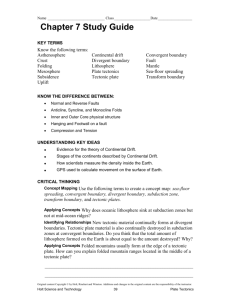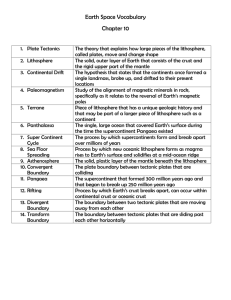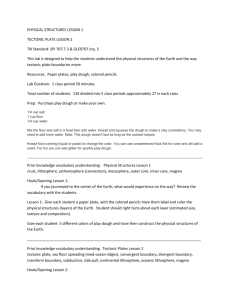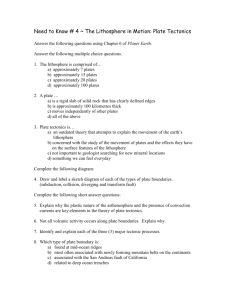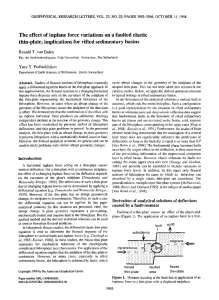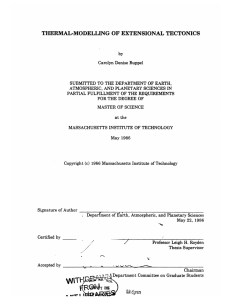Plate Tectonics
advertisement
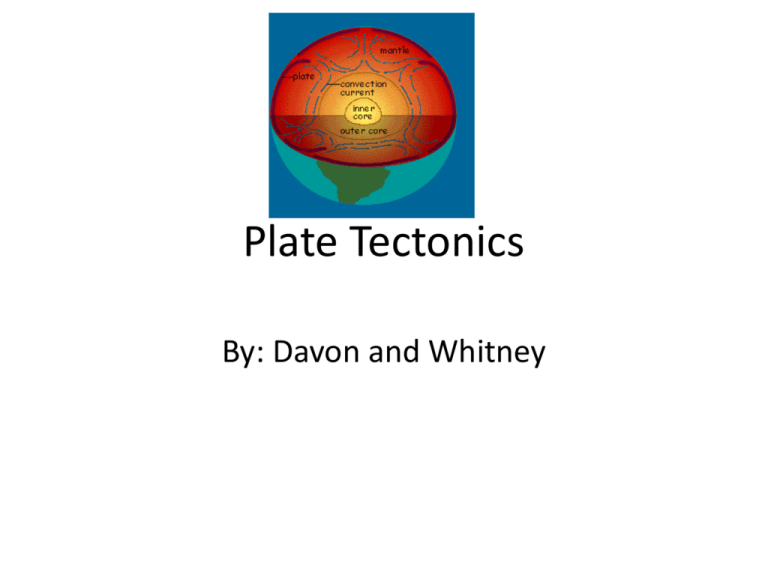
Plate Tectonics By: Davon and Whitney Vocabulary • • • • • • • • • • • • • Crust Mantle Core Lithosphere Asthenosphere Mesosphere Outer core Inner core Tectonic plate Continental drift Sea-floor spreading Convergent boundary Subuction zone • • • • • • • • • • Divergent boundary Transform boundary Stress Compression Tension Folding Fault Normal fault Reverse fault Strike-slip fault Vocabulary • • • • • • • Sea-floor spreading • Convergent boundary • Seduction zone • Divergent boundary • Transform boundary • Stress • Compression Tension Folding Fault Normal fault Reverse fault Strike-slip fault Tectonic Plate Boundaries Sea floor Sea-floor spreading creates new oceanic lithosphere at midocean ridges. Pangaea Structure of the earth Vocabulary Review • Asthenosphere- the soft layer of the mantle on which pieces of the lithosphere move • Plate tectonics- the theory that the earths lithosphere is divided into tectonic plates that move around on top of the asthensphee • Folding-the bending of rock layers due to stress in the earths crust • Convergent boundary-the boundary between two colliding tectonic plates Vocabulary Review • Sea-floor spreading- the process by which new oceanic lithosphere is created at mid-ocean ridges as older materials are pulled away from the ridge. • Crust- the thin, outermost layer of the earth, or the uppermost part of the lithosphere. • Seduction zone-the region where an oceanic plate sinks down into the asthenosphere at a convergent boundary, usually between continental and oceanic plate Vocabulary Review • Stress- the amount of force per unit area that is put on a given material. • Tension- the type of stress that occurs when forces act to stretch an object. • Reverse fault- a fault in which the hanging wall moves up relative to the footwall.

